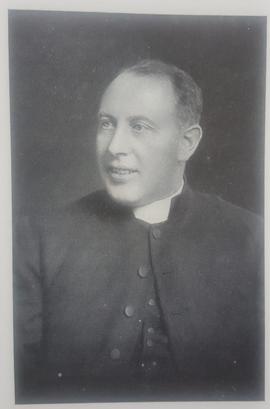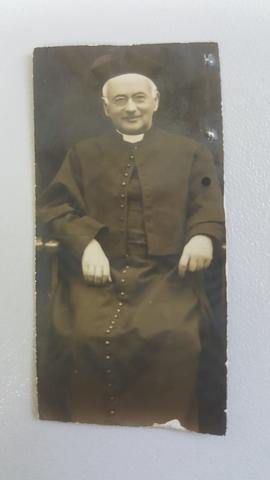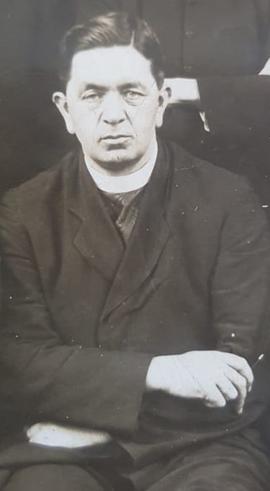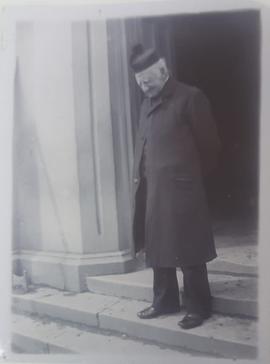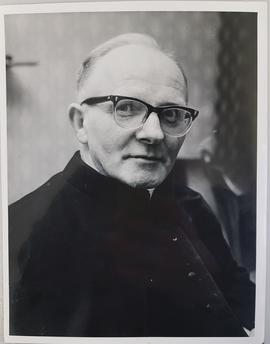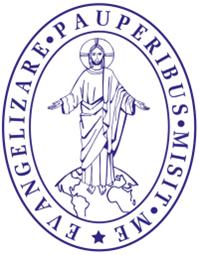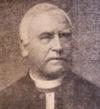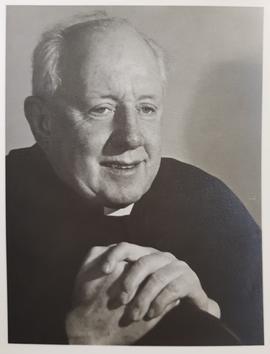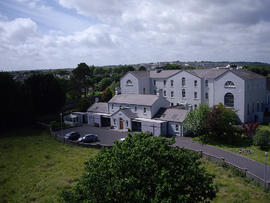Showing 278 results
Authority recordO'Connor CM, Henry, 1883-1960, Provincial of Irish Vincentian Province
- Person
- 1883-1960
Henry O'Connor was Provincial of the Irish Vincentian Province 1932-1942. He was also President of Castleknock College 1926-1932.
Walshe CM, Joseph, 1850-1926, Provincial of Irish Vincentian Province
- Person
- 1850-1926
Joseph Walshe was Provincial of the Irish Vincentian Province 1909-1921.
Bennett CM, James, 1877-1957, Provincial of Irish Vincentian Province
- Person
- 1877-1957
James Bennett was Provincial of the Irish Vincentian Province 1921-1932.
Morrissey CM, Thomas, 1834-1915, Provincial of Irish Vincentian Province
- Person
- 1834-1915
Thomas Morrissey was Provincial of the Irish Vincentian Province 1888-1909.
Cahalan CM, James, 1910-1991, Provincial of Irish Vincentian Province
- Person
- 1910-1991
James Cahalan was Provincial of the Irish Vincentian Province 1966-1975.
- IE CMI
- Corporate body
- 1833-2021
The Irish province of the Vincentian Community was founded in 1833, inspired by the work of Vincent de Paul, who had founded the Vincentians in France in 1625. https://vincentians.ie/who-we-are/the-history-of-the-irish-vincentians/
Carroll CM, John, 1899-1987, Vincentian Priest
- Person
- 1899-1987
John Carroll was born in 1899 in Dromkeen, Co Limerick and educated at Castleknock College.
He joined the Vincentian community in 1918 and was ordained in 1926.
He had two appointments in Castleknock, with Strawberry Hill in between.
He then went to Cork and in 1934 was lent, with Fr Willie McGlynn, to Australia to help with missions.
In 1940 he volunteered as a chaplain with the Australian army, and served until 1945, when he returned to Ireland.
He was in Phibsboro twice, with superiorship in Lanark, Scotland, in between. His main work was missions.
He went to Castleknock in 1968, and spent his final eleven years there in retirement, but not idle.
He died there in 1987 aged 87: https://www.findagrave.com/memorial/260399833/john-carroll_cm
- PC
- Family
- 1642-2024
In the early 17th century, as a result of continued persecution of Catholics, it was illegal for women to train in Ireland as religious so many opted to travel to Spanish Flanders, France or Spain in order to fulfill their calling. This was the case with the foremothers of our community. They travelled to the Poor Clare monastery in Gravelines, then in the territory of Spanish Flanders, modern-day Northern France. Some of them had brothers who were already Franciscans in the Irish Franciscan College in Louvain. That college had been founded in 1607.
The Poor Clare monastery of Gravelines was founded in 1609 to provide a house for English women who wished to become Poor Clares.As the Irish friars were already established in Louvain they provided spiritual assistance to this monastery before their Irish sisters arrived. Our foremothers joined this community in the early 1620s and by 1626, they numbered five sisters. In that same year on the 20th of May they left the Gravelines community and set out to found a separate house specifically for Irish women in the neighbouring town of Dunkirk. As circumstances changed they eventually decided to return to Ireland in 1629 now numbering seven. After a short period in Dublin they eventually settled in a rural part of Co. Westmeath not far from Athlone. The monastery was appropriately called 'Bethlehem' to emphasise the central focus of Franciscan spirituality, namely the poverty and humility of the Son of God in taking on our human flesh and becoming one with us in the Incarnation.
As the number of women joining the community grew daughter houses were established in Galway, Drogheda, Athlone and Wexford.
We thank God for the life and witness of our sisters and for their faith, courage and dedication to Christ and His holy Mother after the example of St. Francis and St. Clare. We pray that whatever our state in life, we may be faithful to God as they were and that our lives may bear great fruit as theirs did.
This year, 2022, marks the 400th anniversary of the solemn profession of blood sisters Cecily and Eleanor Dillon on the 8th of September 1622. . Sr. Cecily was the Abbess of Bethlehem monastery, the motherhouse of our Galway monastery at the time that the foundation was made in 1642.

